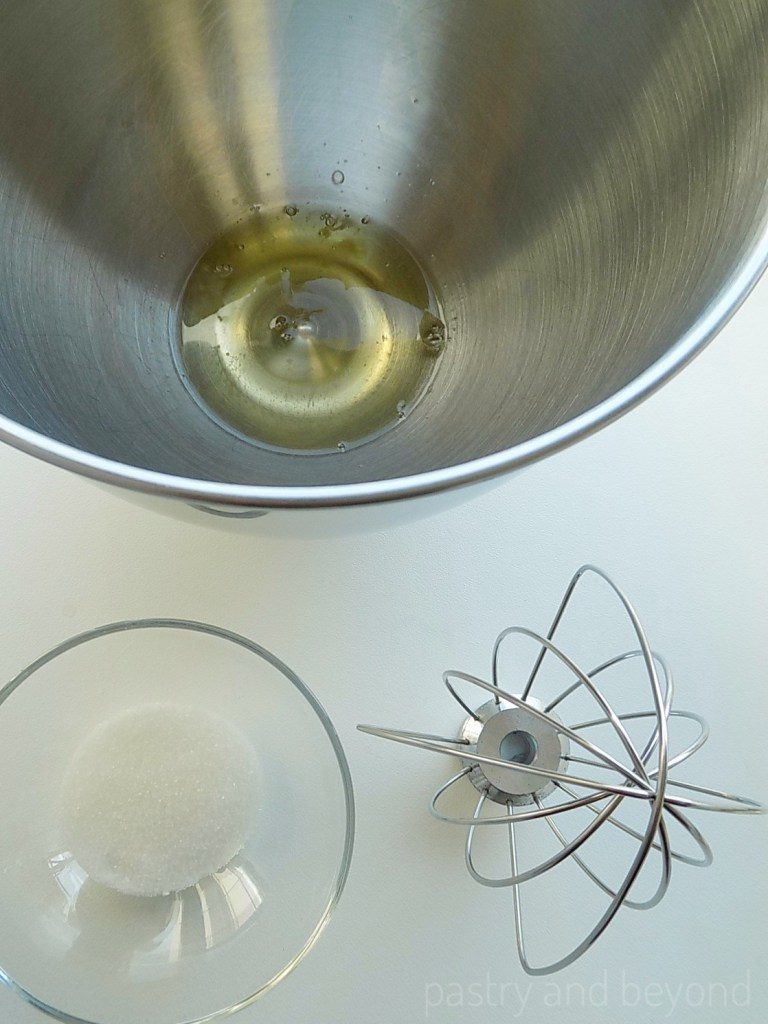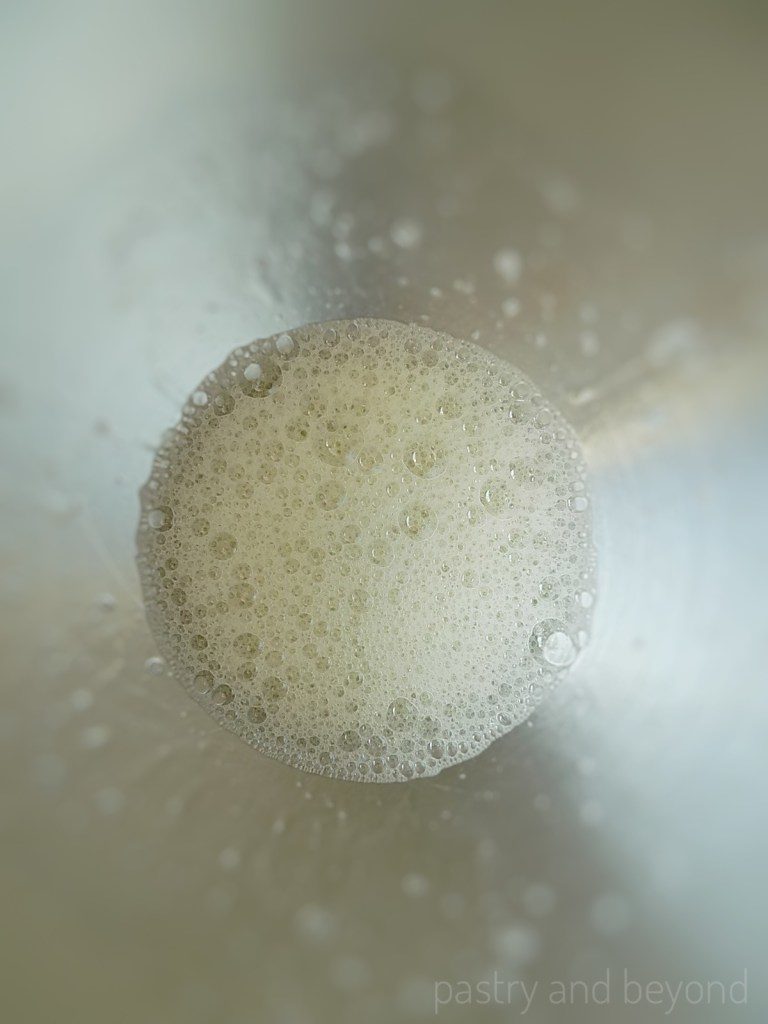You can learn about French Meringue and easily make French Meringue recipe with step by step pictures!
Today I am sharing how to make French Meringue with step by step pictures.
If you want to learn about the different types of meringues, you can check my previous post.
Very shortly,
What is French Meringue?
French meringue is the most delicate one among the other types of meringues. It is the easiest to make. We whisk room temperature egg whites and then beat them with sugar until we get the desired consistency.
You can use it to naturally leaven and lighten desserts such as souffles, cakes and cookies or you can use it over pies. Besides, you can also use French meringue when you make macarons. If you use pasteurized eggs, you can make meringue kisses.
How Much Sugar Do We Use?
In my types of meringues post, I talked about the sugar ratios.
Shortly,
If you want to make a soft meringue to cover your pies, the ratio is 1:1, 1 part of egg white to 1 part of sugar by weight.
However, if you want to make a stiff-hard meringue to make pastry shells or meringue kisses, the ratio will be 1:2 or 1:1,5; 1 part of egg white to 1,5-2 parts of sugar by weight.
Do We Bake or Dry Meringue Kisses?
If you are planning to make meringue kisses, you should keep in mind that we don’t bake the meringue kisses but dry them at low temperature. So, if you are not using pasteurized eggs, it won’t be safe to use this method for meringue kisses because of the salmonella risk.
Swiss Meringue where the sugar and eggs are heated at some degree or Italian Meringue where the egg whites are heated with sugar syrup will be appropriate for meringue kisses.
If your plan is using French Meringue over pies, it is advised to bake it at 375°F (177°C) for 15 minutes to avoid salmonella. You can read about egg safety at Foodsafety.gov.
After my warnings, let’s see how I make French meringue. 🙂
How to Make French Meringue
First I separate the egg whites carefully, I make sure that no egg yolk is mixed to the egg whites, the bowl and the whisk are clean, free of any type of fat and water. Otherwise, egg whites won’t get the volume.
I always place the egg white into a small bowl first and then transfer that egg white into my mixing bowl. I repeat this step until all the egg whites are separated. I don’t take any risk because if a yolk is tainted to one of the egg whites and I can’t remove it, it means that I can’t use any of the egg whites.
Remember that egg whites are easier to separate when they are cold but easier to whisk when they are at room temperature. After you separate the egg whites, let them stand at room temperature for 30 minutes.
After I place the egg whites into my mixing bowl, I whisk the egg whites at medium-low speed. I start with low speed and then slowly increase to medium speed. The air starts to incorporate, egg whites become frothy almost in 1 minute.
Usually, I use French meringue when I make cakes, ladyfingers without an acid. If you prefer to use an acid, you can add it (lemon juice or cream of tartar) at that moment when the egg whites start to become frothy. Acid helps to stabilize the egg whites.
Then, at medium speed, I continue whisking. When the foams become thicker, I gradually add sugar.
After I add the sugar, I increase the speed to medium-high and continue whisking until it forms soft peaks. At soft peak when you turn the whisk, the meringue will form a hook, fall over on itself. This stage is ideal if you’ll fold the egg whites mixture into a batter.
If you want to reach the stiff peak stage, you should continue whisking at high speed. You should check if the meringue points straight up when you lift the whisk.
It is very easy to overbeat the meringue so you should stop the machine and check if you reach the desired consistency. You can still fold the meringue into the batter while the meringue is at stiff peak but be careful not to deflate the meringue by overfolding. You should fold gently.
Below I share French Meringue recipe for soft and hard French meringue. Hope you enjoy!

French Meringue Recipe
Ingredients
- 3 large egg whites (105 grams)
- 105 grams(½ cup) granulated sugar for soft meringue or 150 (¾ cup) to 210 grams (1 cup) granulated sugar for hard-stiff meringue
- 1 teaspoon lemon juice or ½ teaspoon cream of tartar, (optional)
Instructions
- Place the egg whites into the mixing bowl. Your mixing bowl and whisk must be free of any type of fat and water so the egg whites can get volume.
- Start with low speed and gradually increase to medium. Egg whites will look frothy in a minute. If you are using an acid, add the acid now.
- Continue whisking at medium speed. The foam will become all white and thicker. At that moment, gradually add the sugar and beat until you reach the desired consistency: If you want to use the meringue when it is at soft peak, stop whisking if the meringue forms a hook, falls over on itself when you turn the whisk. This stage is ideal if you’ll fold the egg whites mixture into a batter. If you want to reach the stiff peak continue beating at high speed until the meringue points straight up when you lift the whisk. In order not to overbeat, stop the machine and check the meringue to see if you reach the desired consistency.











Leave a Reply